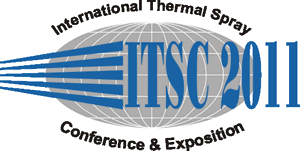
|
2598 |
|
Thursday, September 29, 2011, Saal B2.2 4:00 PM Process Diagnostics, Sensors & Controls 2 |
|
Modeling properties of HVOF thermally sprayed WC-Co coatings based on particle-in-flight characteristics |
|
Birger Hussong* / TU-Dortmund/Institute for Material's Technologies, Germany Wolfgang Tillmann / Institute for materials technology, Germany Niko Rudak/ Institute for mathematical statistics, Germany Henrike Weinert/ Institute for mathematical statistics, Germany |
|
Numerous factors, such as the spray parameters and non-predictable conditions, during the spraying process influence the properties of thermally sprayed coatings. However, the condition of the particles at the moment of impact on the substrate is the most crucial factor for the morphology and the mechanical properties of a coating. Thus, nowadays particle analyzing systems are employed in order to explain the relation between the process parameters and the properties of a layer. Yet, modeling of thermal spray processes is conducted disregarding particle parameters and only correlating process parameters with layer properties. This article presents a new approach on process modeling, by relating particle-in-flight conditions to coating properties, to make it possible to predict layer properties just by observing the spray beam. The modeling of the particle properties in relation to the process parameters should further allow conducting targeted adjustments during the ongoing process, to influence the particle properties measured online. This method will enable to influence coating properties during the spraying process, eliminating the influence of unpredictable environmental or process-related disturbances. In a series of experiments, specimens were coated with a WC-Co 88/12 layer in an HVOF Process. Spray beam properties were measured in the same run. The layer properties as well as the layer morphology were correlated to the particle-in-flight conditions, which were measured by utilizing two particle analyzing systems. |